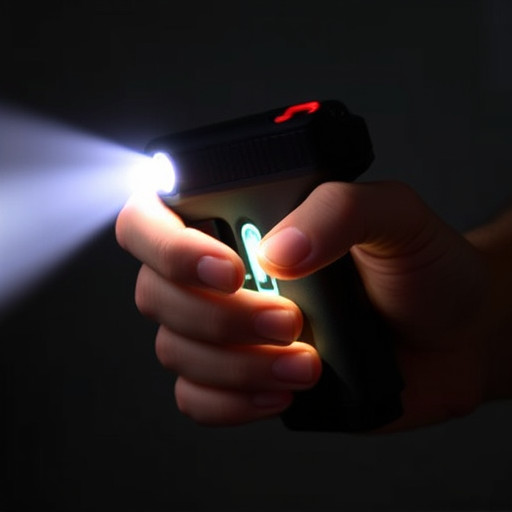Stun guns, or electronic control devices (ECDs), utilize high-voltage, low-amperage electrical pulses delivered through metal probes to temporarily incapacitate targets by disrupting nerve signals and muscle control. Their effectiveness depends on accurate shock delivery and minimizing unintended damage, with stopping power ratings indicating their force or energy output. These devices disable targets by interrupting body electrical signals, causing intense pain, spasms, and temporary paralysis. Key factors influencing performance include range, durability, and safety features designed to prevent accidental activation. Understanding how stun guns work is crucial for evaluating their reliability in self-defense applications.
“Uncover the surprising science behind stun guns and their stopping power. This article delves into the effectiveness of these self-defense tools, exploring the factors that make them powerful deterrents. From understanding the technology to interpreting ratings and considering practical aspects like range and safety, we demystify stun gun functionality. Learn how these devices work, dispel myths, and gain insights to make informed decisions about personal safety. Prepare to explore a world where self-defense meets innovative design.”
- Understanding Stun Gun Functionality: The Science Behind Shocking Effectiveness
- Deciphering Stopping Power Ratings: What They Mean and How to Interpret Them
- Factors Influencing Stun Gun Performance: Range, Durability, and Safety Considerations
Understanding Stun Gun Functionality: The Science Behind Shocking Effectiveness
Stun guns, also known as electronic control devices (ECDs), operate by delivering an electric shock to temporarily incapacitate a target. The device emits a high-voltage, low-amperage electrical pulse through two metal probes into the body of the assailant. This sudden jolt disrupts the nerve signals and muscle control in the targeted area, causing intense pain, muscle spasms, and temporary paralysis.
The ‘shock’ from a stun gun works on the principle of disrupting the body’s electrical system. It interfers with the nervous system’s ability to send signals, specifically targeting muscles responsible for movement. This results in a powerful but non-lethal force that can subdue an attacker long enough for self-defense or law enforcement intervention. The effectiveness of a stun gun lies in its ability to deliver this shock accurately and reliably while minimizing collateral damage.
Deciphering Stopping Power Ratings: What They Mean and How to Interpret Them
Stopping power ratings are a critical aspect when evaluating the effectiveness of a stun gun. These ratings indicate the level of force or energy delivered by the device, essentially telling you how powerful it is in incapacitating an attacker. But what do these numbers really mean?
Understanding stopping power involves grasping how a stun gun works. Unlike traditional firearms that rely on projectiles to cause damage, stun guns use electrical current to disrupt muscle control and temporarily paralyze the central nervous system. This sudden jolt of electricity disrupts balance, coordination, and vision, rendering an assailant defenseless for several moments. Ratings then, reflect the device’s ability to deliver a powerful enough shock to achieve this effect—a key factor in personal safety and self-defense scenarios.
Factors Influencing Stun Gun Performance: Range, Durability, and Safety Considerations
Stun guns operate by delivering an electric current through the body, temporarily paralyzing muscles and causing severe pain. This disruption in electrical signals prevents the brain from sending motor commands to the rest of the body, resulting in a loss of control and balance. The effectiveness of a stun gun depends on several factors that influence its performance.
Range is a critical consideration when evaluating stun guns. While many models claim a certain distance for their shock, the actual effective range can vary greatly based on environmental conditions like temperature, wind, and terrain. Durability also plays a significant role; stun guns need to withstand frequent use without degradation in performance or structural integrity. Safety is another crucial aspect; users must consider factors like trigger pull strength, safety features, and whether the device triggers accidentally. These elements collectively determine how well a stun gun performs when needed.
Stun guns, with their potent stopping power, offer personal safety as an accessible option. By understanding the science behind their functionality, deciphering rating metrics, and considering key performance factors like range and durability, users can make informed choices. Remember that while stun guns are effective tools, responsible ownership and awareness of local laws are paramount. Knowing how does a stun gun work and its limitations ensures it serves as a reliable means of self-defense in various scenarios.
